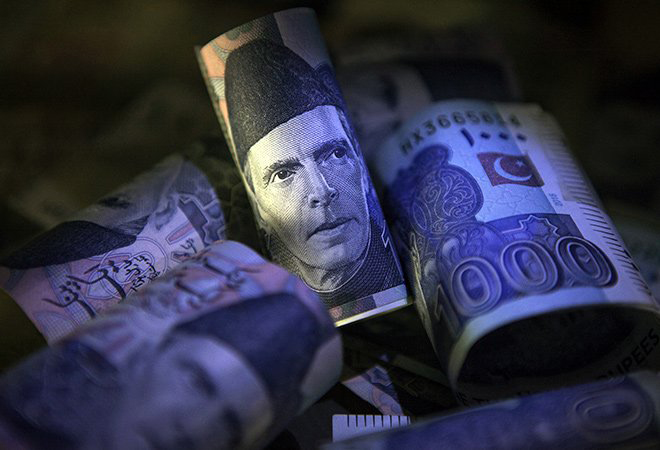Pakistan’s federal budget for fiscal year 2025-26, presented by Finance Minister Muhammad Aurangzeb on Tuesday, outlines an optimistic vision for economic recovery. Despite Pakistan’s ongoing economic challenges, the budget targets a 4.2% GDP growth, a modest improvement compared to the previous year’s 2.7%. The budget’s ambitious projections need to be contextualized within the performance of the previous year, which paints a more cautious picture of the country’s economic resilience and sustainability.
The budget, totaling Rs17.6 trillion, reflects a 7% reduction from last year’s Rs18.9 trillion outlay, with significant changes in taxation and fiscal policies aimed at supporting economic stability.
The budget targets a Consumer Price Index (CPI) inflation rate of 7.5% for FY26, alongside a fiscal deficit of 3.9% of GDP. The primary surplus is expected to be 2.4% of GDP. “We are focused on economic stability and prosperity. We want an economy that is equitable and sustainable,” said Aurangzeb during his speech.
A key highlight of the budget is the reduction in income tax rates for the salaried class, aimed at stimulating consumer spending and easing the financial burden on middle-income earners. For instance, the tax rate for those earning between Rs600,000 and Rs1.2 million has been halved from 5% to 2.5%. Furthermore, tax rates for higher income groups have also been slightly adjusted, and the surcharge on income exceeding Rs10 million has been reduced by 1%. Aurangzeb also emphasised simplified tax filing processes starting in July 2025.
To emphasise this the government has decided to be tougher on the non-filers this time around. It has proposed to add 114C section in the finance bill which will impose restriction on economic transactions for non tax filers i.e. purchase of securities above a threshold, purchase of autos above 850cc, opening of bank account of IPS account except for Asan account.
The finance minister states that, “It was unavoidable to aim for a 14pc tax-to-GDP ratio…without the transformation of the Federal Board of Revenue (FBR), achieving national targets is impossible.”
Despite a rising pension bill, the government has proposed a 7% increase in pension income for government employees. Moreover, income tax exemptions for FATA/PATA areas will be extended for another year, and a 25% tax rebate for full-time teachers and researchers has been restored retroactively from FY23 to FY25. The government also restored the tax credit on mortgages for houses up to 10 marlas and flats up to 2000 sq. ft. Additionally, the 7% FED on immovable property has been removed, and advanced tax has been reduced by 1.5%, benefiting the construction sector. A 0.5% reduction in super tax rates for income slabs between Rs200m and Rs500m is also proposed, which is expected to positively impact the market. Other proposals include the removal of GST on local sales of bun and rusk, a Rs5bn housing subsidy, and Rs5bn in markup subsidies for FY26, along with Rs95bn allocated for payments to IPPs.
As the government touts tax reforms in the budget, sectors such as agriculture and retail remain undertaxed, while the burden of taxation continues to fall disproportionately on salaried workers and formal businesses, undermining efforts to foster broad-based economic growth. These structural weaknesses prevent the economy from diversifying and moving beyond its dependence on a few sectors. While measures to curtail these problems and relieve the already over-taxed sectors have been carried out, they appear in the nascent stage and their effectiveness remains to be tested and questioned.
Pakistan’s economic recovery remains narrow and concentrated in a few industries, particularly apparel. The 2.7% GDP growth reported for the fiscal year contrasts sharply with the government’s earlier target of 3.6%, which was not met. The recovery appears to have been driven by late-year gains, yet much of the growth has been concentrated in specific sectors, particularly those benefiting from export-oriented apparel production.
In contrast, agriculture and large-scale manufacturing, traditionally key pillars of Pakistan’s economy, continue to experience stagnation and decline. Large-scale manufacturing, which is often a bellwether for economic health, contracted despite government efforts to reduce imports and protect local industries.
To counter these problems, the government has proposed a decrease in custom duties in the Finance Bill proposed with the budget, and has also set export and import target of US$35.3bn and US$65.2bn for FY26, showing 7.4% and 12% increase respectively from the revised numbers of US$32.85bn and US$58.3bn for FY25.
In an effort to manage the country’s debt, the government plans to issue Panda Bonds to access Chinese capital markets and aims to privatise state-owned assets such as Pakistan International Airlines (PIA) and the Roosevelt Hotel by FY26.
The government has allocated Rs2.55 trillion for defense, marking an increase of more than 20% compared to last year’s Rs2.12 trillion. On the subject the finance minister stated that, “In light of the contribution of the armed forces to defending our borders, officers and junior-commissioned officers will get a special relief allowance.”
Meanwhile, the Public Sector Development Programme (PSDP) has been allocated Rs1 trillion, with Rs90.2 billion set aside for 47 energy sector development projects. Additionally, Rs716 billion has been earmarked for the Benazir Income Support Programme (BISP), a 21% increase from the previous year.
A substantial portion of the budget, Rs8.2 trillion, will go towards mark-up payments, accounting for nearly half of the total expenditure. The federal tax collection target has been set at Rs14.13 trillion, a 9% increase from the FY25 target.
The budget comes after Pakistan missed its FY25 GDP growth target of 3.6%, with actual growth standing at 2.7%, as reported in the Economic Survey 2024-25. Despite this, the finance minister highlighted a 4.8% rebound in industrial activity, bringing the economy’s size to $411 billion for the first time and raising per capita income to $1,824.
While the budget introduces tax relief for salaried individuals, the larger challenge of tax reform remains. Pakistan’s tax system continues to rely heavily on the formal sector, while many sectors, including agriculture, remain untaxed. Without addressing this imbalance, it is unlikely that the country will see the broad-based economic growth needed to overcome its structural inefficiencies.
Prime Minister Shehbaz Sharif, in his remarks to the federal cabinet before the budget address, noted that Pakistan had reached a “take-off position” in terms of economic indicators. He also stressed the need to surpass India in economic growth following the country’s military success.
However, the juxtaposition of the budget’s optimism and the ground reality offers a more cautious outlook that highlights the tension between short-term measures and long-term structural reforms.
While the budget’s fiscal targets and tax reforms provide a roadmap for economic stability, they are unlikely to be sufficient without addressing the deeper issues plaguing Pakistan’s economy. For the country to achieve sustainable growth, the government must prioritize reforms that address tax fairness, industrial competitiveness, and investment in sectors capable of driving real, inclusive growth. Until then, the optimism presented in the budget may remain just that—optimism, rather than a tangible recovery.




